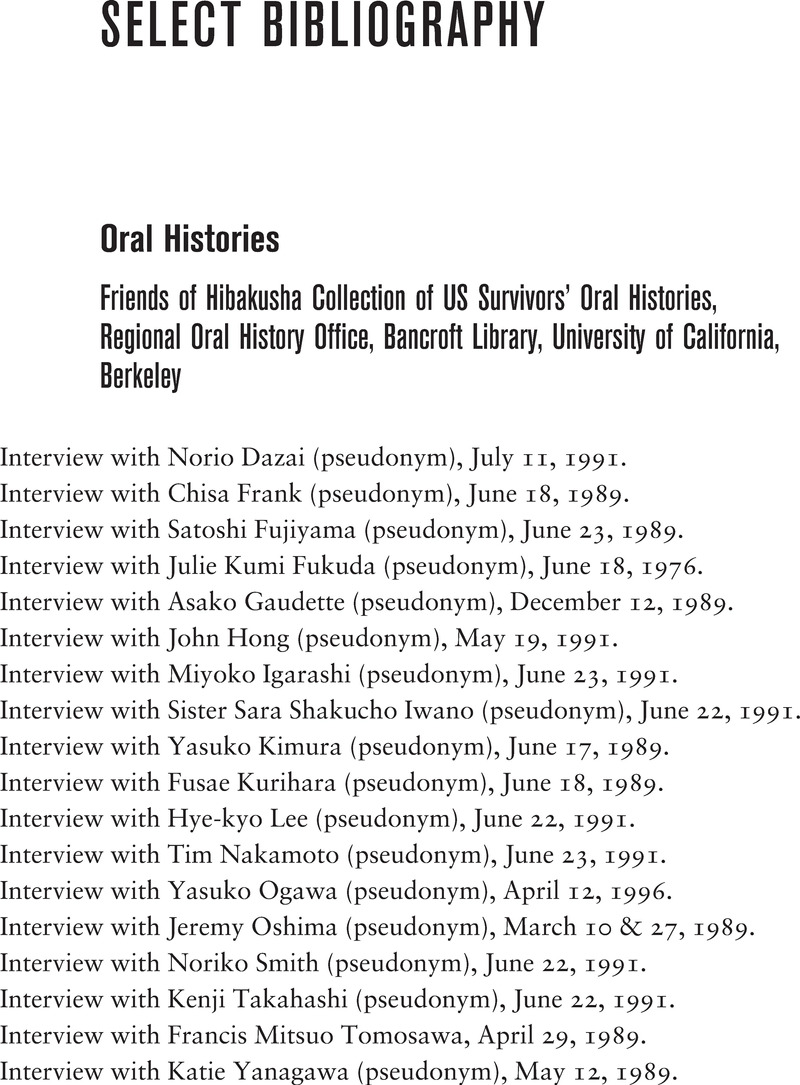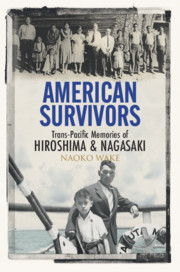Book contents
- American Survivors
- American Survivors
- Copyright page
- Dedication
- Contents
- Figures
- Abbreviations
- Notes on the Text
- Acknowledgments
- Introduction
- 1 Cities of Immigrants
- 2 Remembering the Nuclear Holocaust
- 3 Reconnecting Families
- 4 War and Work Across the Pacific
- 5 Finding Survivorhood
- 6 Endlessness of Radiation Illness
- Epilogue
- Notes
- Glossary
- Select Bibliography
- Index
- References
Select Bibliography
Published online by Cambridge University Press: 27 May 2021
- American Survivors
- American Survivors
- Copyright page
- Dedication
- Contents
- Figures
- Abbreviations
- Notes on the Text
- Acknowledgments
- Introduction
- 1 Cities of Immigrants
- 2 Remembering the Nuclear Holocaust
- 3 Reconnecting Families
- 4 War and Work Across the Pacific
- 5 Finding Survivorhood
- 6 Endlessness of Radiation Illness
- Epilogue
- Notes
- Glossary
- Select Bibliography
- Index
- References
Summary

- Type
- Chapter
- Information
- American SurvivorsTrans-Pacific Memories of Hiroshima and Nagasaki, pp. 366 - 380Publisher: Cambridge University PressPrint publication year: 2021

